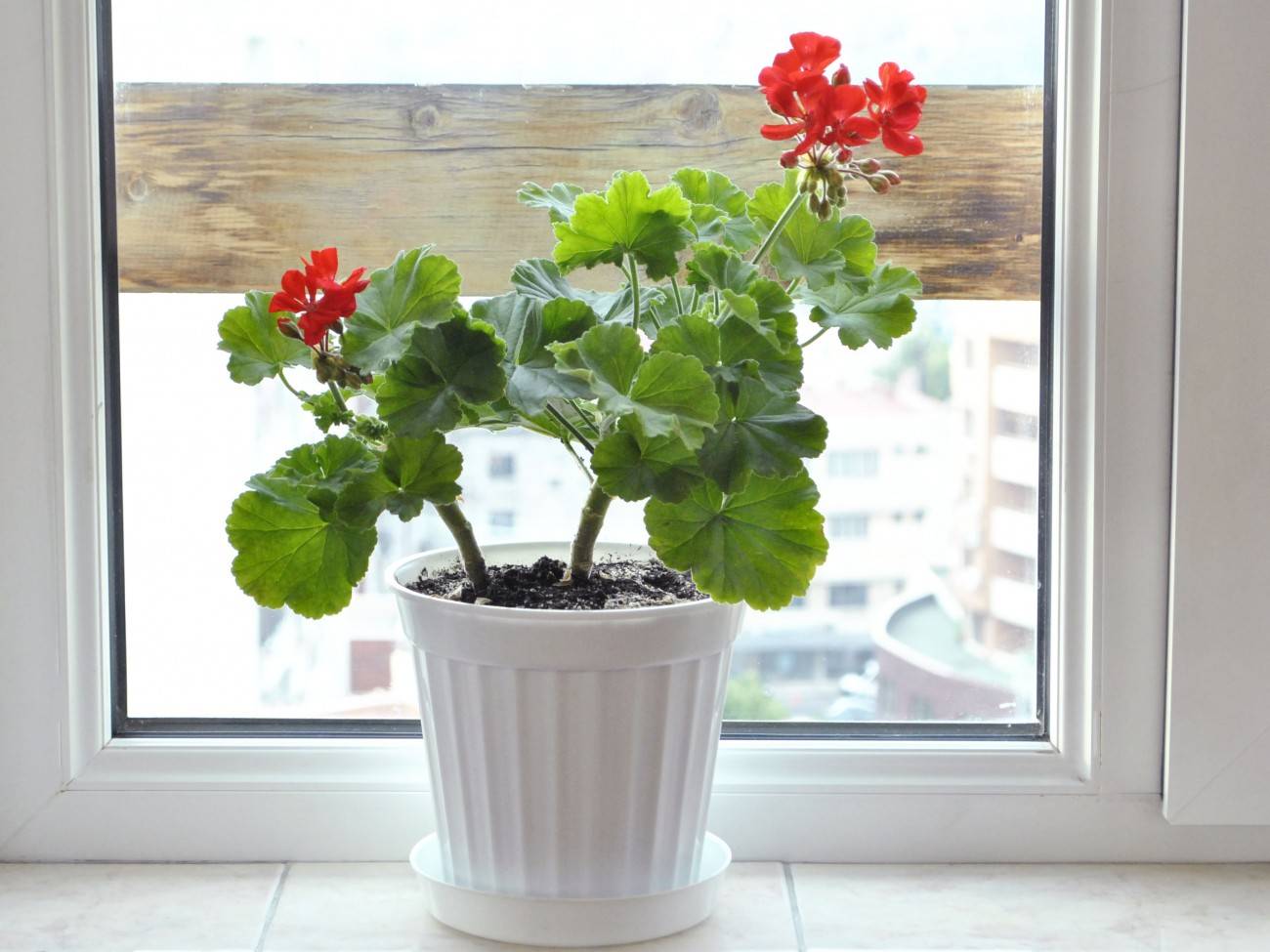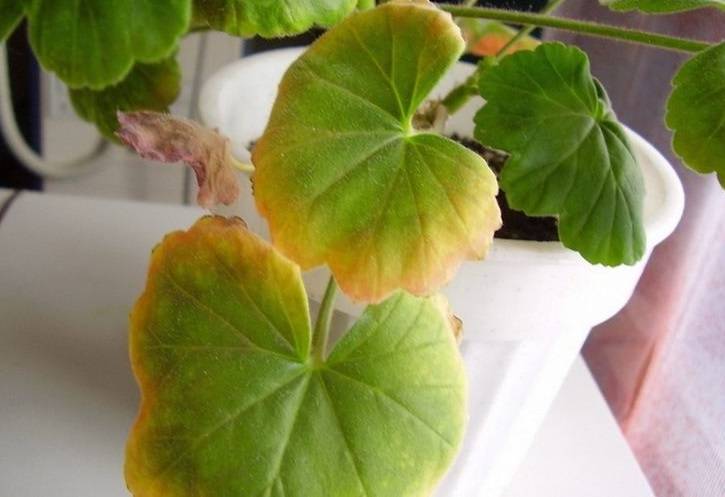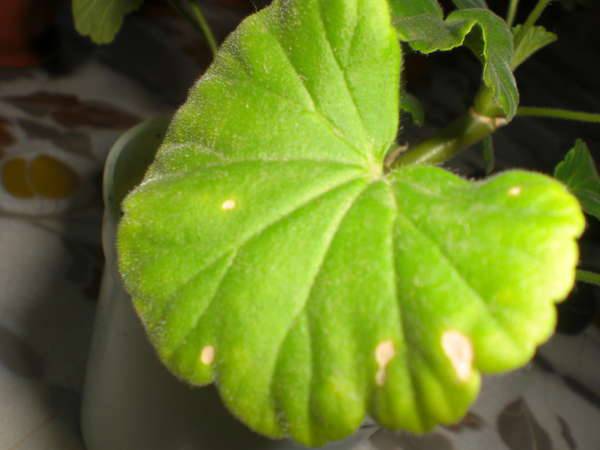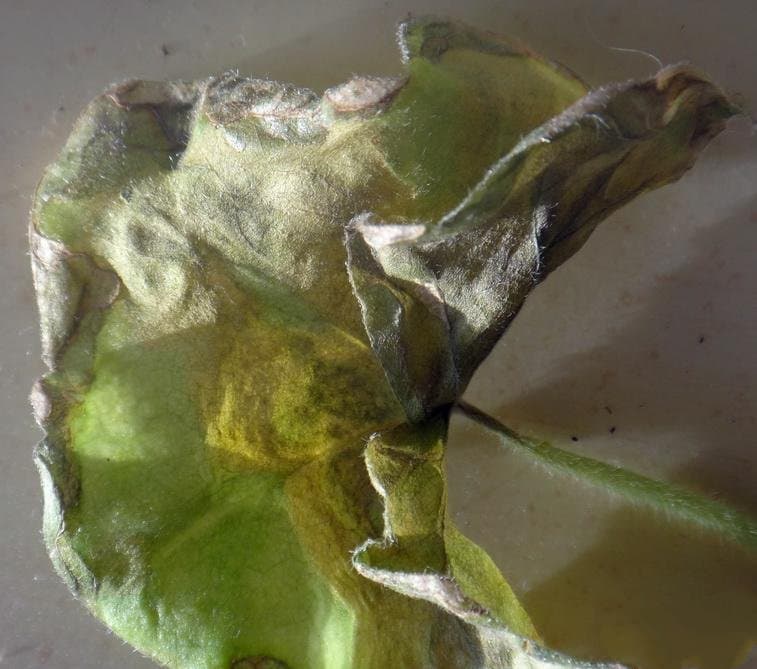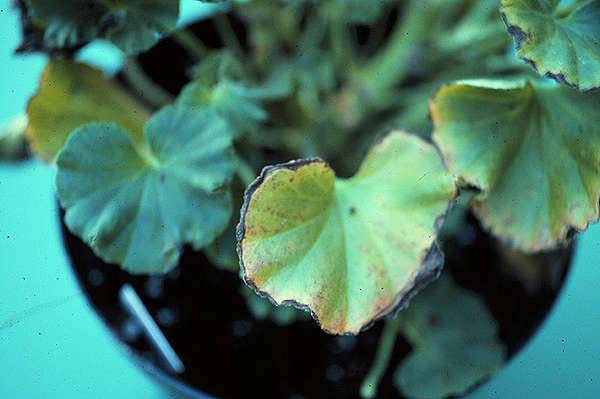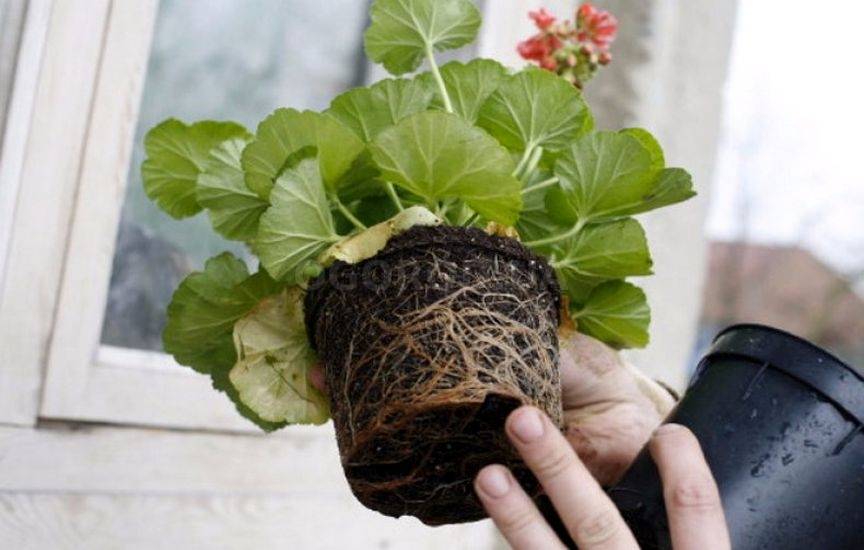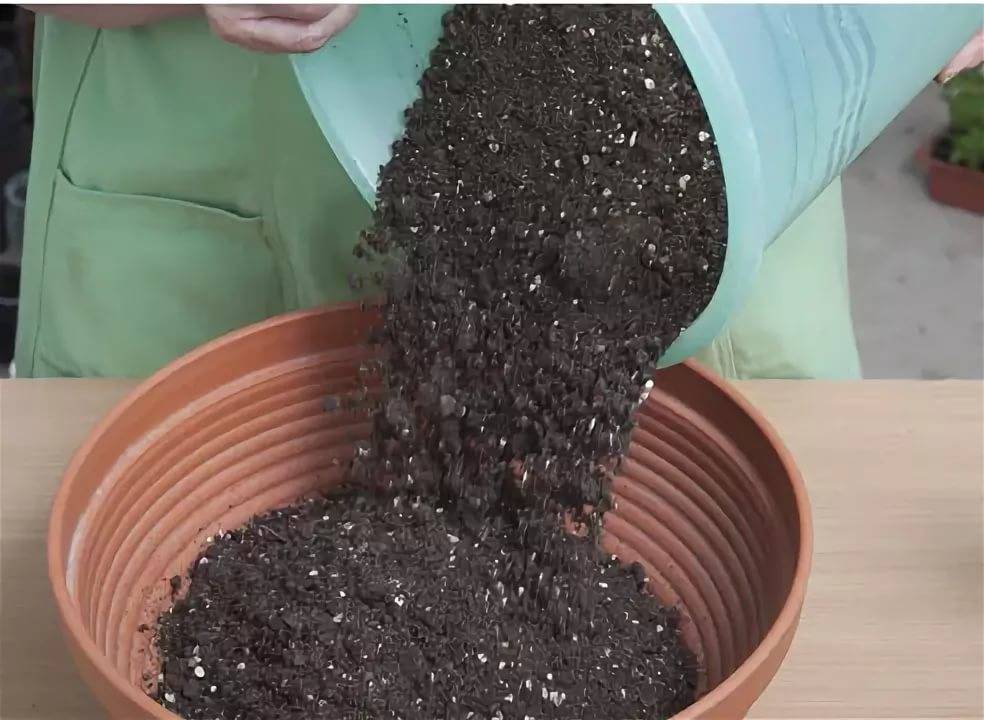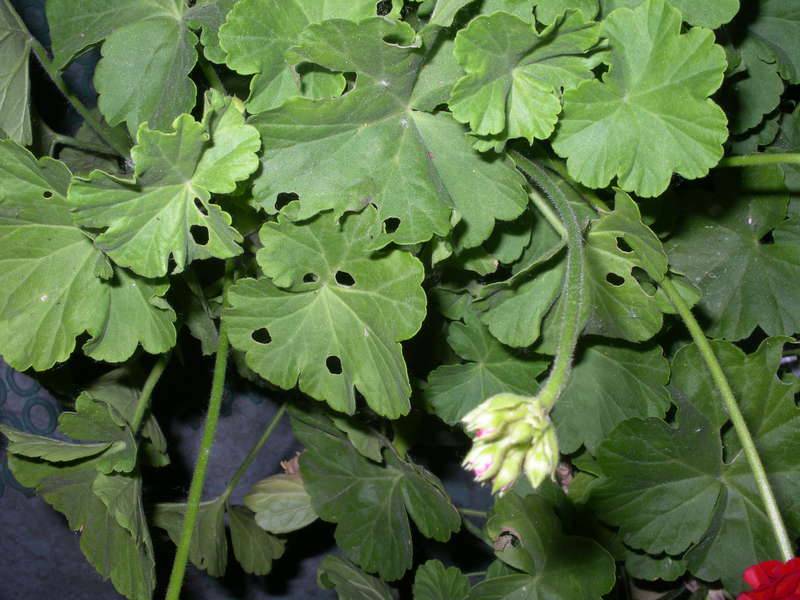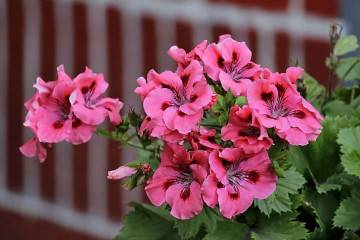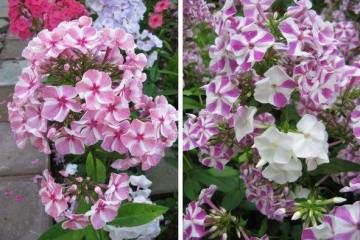Why geranium leaves turn yellow at home - causes and treatment
Content:
Geranium is a popular indoor flower that can be found in almost every home. However, novice growers may not know certain rules for growing this plant. There may be many reasons why geranium leaves turn yellow, and therefore it is worth knowing how to deal with it.
The nature of the yellowing of geranium leaves
If yellow spots appear on the leaves of an indoor flower, then you must immediately try to understand what caused this. Thus, the plant signals the deterioration of its condition. More often than not, yellowing and drying of the leaves means inappropriate conditions or improper care. It is possible to determine what exactly became the cause by the localization of the spots.
Around the edges
Pelargonium leaves begin to brighten at the edges most often in winter. This is due to improper care of the plant during this period. If you do not start measures to restore the plant in time, the yellowness will go down from the top. Treatment consists of changing conditions. It is worth familiarizing yourself with the rules on how to care for geraniums during the rest period.
Spots
If caterpillars, whiteflies, nematodes, aphids or ticks have settled on geraniums, then yellow spots may begin to appear on the leaf plate. These pests feed on the sap of the plant. These symptoms appear in the case of plant diseases. Depending on the type of pests and diseases, it is worth choosing certain means of treating a flower.
Yellowing is accompanied by wilting of the plant
If the plant begins to wilt after yellowing, then the reason for this is verticellosis wilt. In this case, the underside of the leaf begins to turn yellow, and then it simply dies off, and the process flows onto the stem. It is not possible to save the plant after this. It is necessary to start acting immediately after the detection of the disease.
Yellowing turns into blackening
Blackening of the leaves is due to the appearance of mealybugs on the plant. Places of their vital activity are marked with sooty fungi, which form a plaque of the corresponding color. The blackened leaves begin to fall off. Treatment is possible with special insecticides.
The age of pelargonium is the cause of the yellowness and dryness of the leaves
In some cases, yellowing of the leaves is normal. This is an experience after a climate change when moving from the street to an apartment or after a transplant.The age of the flower can also affect. In this case, several lower leaves begin to turn yellow. Over time, they dry out and fall off. Do not panic, you just need to continue to properly care for the plant.
Common Leaving Causes of Geranium Leaves
Lack of proper care can lead to the fact that the plant will not bloom or even begin to wilt. It is not enough to plant geraniums in accordance with the instructions, if then certain rules are not followed.
Too infrequent or frequent watering
Swampy soil is not the best option for the development of geraniums, but it also dislikes absolutely dry land. It is recommended to moisten the soil as the top layer of the soil dries up.
Lack of drainage layer
Drainage prevents the formation of a bog in the flower pot. Home care for geraniums will be much easier if you add a layer of expanded clay or crushed stone to the bottom of the pot.
Cramped pot
Selecting a flower pot is required according to the size of the plant's root system. Geranium begins to react to lack of space by yellowing foliage. This is due to the fact that in the soil there is not only insufficient nutrients, but also air for the flower.
Errors in care during the dormant period of the flower
In winter, the flower is required to be kept under certain conditions that differ from those that are necessary during the growing season. First of all, it is worth taking the flower to a cooler place, protecting it from drafts. It is not recommended to place the plant pot next to heating elements. Also, do not be zealous with watering. The amount of water and the frequency should be reduced, since less water is required during the rest period, especially in a cold environment.
Lack or excess of feeding
The amount of mineral components in the soil is constantly drying up, and therefore from time to time they need to be replenished. Depending on the time of year and the life cycle of geraniums, fertilizers of different compositions are required. In the spring, nitrogen is needed to a greater extent, and in the summer - potassium and phosphorus.
Incorrect geranium placement
It is worth taking care of the correct placement of the flower pot in the house. Although geraniums love sunlight, you need to dim it a little. Fresh air is good for the plant, but because of this, you should not place the flower in a draft.
In winter, it is worth taking geraniums out to a cool room, but in this case, you should not leave them on the windowsill, since the sheets touching the glass can get frostbite. Being near heating appliances is also harmful.
High air humidity
Air humidity should be in the region of 50-60%. With a decrease and increase in this level, geranium begins to feel bad and signal this by yellowing its foliage. When the conditions are normalized, this reaction will disappear.
Transplant errors
Any flower undergoes transplant stress. After carrying out this procedure, it is worth observing the plant more closely.
It is recommended to undertake the preparation of the soil. If this is not possible, it is worth purchasing a special substrate for ampelous plants. The soil should be moderately loose, slightly acidic or neutral acidity. It is worth making sure that there is a drainage layer in the pot. To prepare the substrate, you will need to take in equal amounts of humus, turf, peat and river sand.
The transplant procedure is required after a 2-hour break after abundant watering.
Diseases that cause yellowness and dryness of foliage in geranium
Yellowing of the leaves can be caused by the presence of certain diseases in the plant. If midges began to fly over the flower, then the reason is waterlogging of the soil. In this case, it is required to exclude watering for a while so that the substrate dries out. Against pests, it is worth adding the preparation thunder-2 to the soil.
Verticillium wilting is found in the soil, in which it can persist for up to 10-15 years. The spread of the disease will stop if the plant and shoots are removed. It is worth adding a fungicide to the soil. Transplanting geraniums in this case will not help, since it is almost impossible to completely remove the substrate from the root system.
Harmful insects
The appearance of yellow spots on the leaves indicates the infection of the flower with harmful insects. It is recommended to carefully examine the flower and identify their presence in order to know in what ways it will be possible to save the geranium.
- Ticks live on the lower part of the leaf. On the leaf itself, small yellow spots first appear, which then dry out and discolor. Appear at high air temperature and dryness. It is recommended to treat the leaves with soapy water and special preparations.
- When aphids appear, the leaves turn yellow and curl, and there may be sticky secretions on them. Can also be washed off with soapy water. In case of severe damage, treat with special preparations.
- More than others, traces of the presence of caterpillars are visible. They leave a black discharge, and also gnaw out large areas on the leaves. Insects can be harvested by hand and treated with biological insecticides.
What to do if geranium turns yellow and dries
Preventing yellow leaves from royal pelargonium is easy enough. This requires revising the rules of care that were applied before. First of all, it is worth considering that geranium is a light-loving flower, and therefore it is worth placing a pot with it on a sunny windowsill with diffused light.
The air temperature in the room should be average, about 15 ° C. Dry and fresh air is the optimal environment in which to keep the plant. However, it is not recommended to allow the flowerpot to be in a draft. If diseases and harmful insects are found on geraniums, it is required to immediately begin processing with special agents.
Top dressing against yellow and dry leaves
Top dressing is an important part of geranium life. The choice of fertilizer is required depending on the life cycle of the flower. To grow greenery, it is worth adding nitrogen to the soil, for growth - potassium, and for flowering - phosphorus. It is recommended to inject liquid fertilizers into the soil after watering so as not to burn the root system. To prevent yellowing and drying of the leaves, it is worth adding the following dressings from folk recipes:
- hydrogen peroxide will help even if the flower has begun to wilt. This remedy relieves diseases if used in combination with other special solutions. To prepare the solution, you need to take 25 g of the substance per 1 liter of water. It is recommended not to inject it into the soil, but to spray it on the plant;
- milk can be used to strengthen the plant. It dissolves in a liter of well-settled water at room temperature. Watering with this solution should be alternated with the usual;
- Castor oil can be used to stimulate the growth of geraniums. Mix a teaspoon of the product with a liter of warm water and spray the leaves of the flower. The solution can be used for watering. It is recommended to start application during flowering and budding.
What to do if geranium leaves turn yellow and dry, not every florist knows. You need to act depending on the cause of the appearance of this symptom. It is definitely worth learning how to properly care for the plant, since these mistakes can harm it in more cases.
